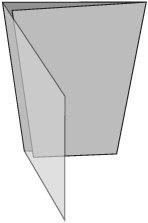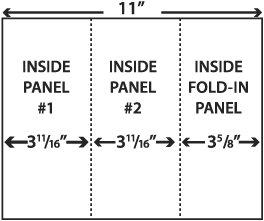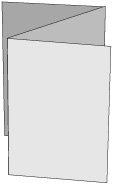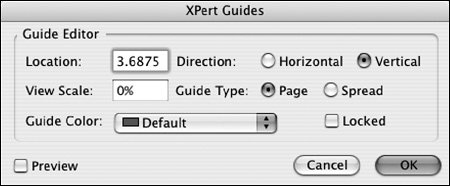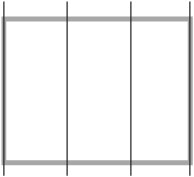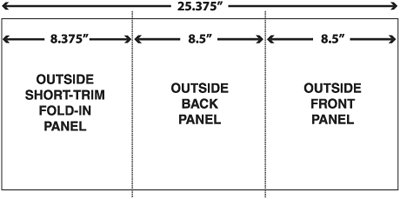Folding: High-Speed Origami
| Consider something as simple as a three-panel, letter-fold brochure. If all panels were the same width, the innermost panel would buckle, and the piece would never fold completely flatthe brochure would spring open or the oversized panel would crinkle when forced (Figure 3.7). You can demonstrate this for yourself by folding a sheet of paper into approximate thirds, as if you were going to stuff it in an envelope. Figure 3.7. Wrong: a three-panel piece with equal-sized panels. The inner panel buckles, so the piece can't fold properly. The solution? Make the fold-in panel more narrow (Figure 3.8). Sounds simple, but think of the effect on your design: You have to build your design to accommodate the shorter third panel. The sanest way to do this is to build such a piece as a two-page jobone page for the outside and one for the inside. Don't build such a piece as a pair of three-page spreads because this provides no way to create the narrower panel (page layout applications only allow one page size per document). Figure 3.8. Right: three-panel piece folded so the innermost panel is narrower. Now the piece folds flat. For example, if the finished, open flat width is 11 inches, build the file with two panels that are 311/16 inches wide and one panel 35/8 inches wide. Keep in mind that the inside and outside of the piece are mirrors of each other: The outside of the brochure will need the short trim panel on the left, and the inside of the brochure will need the short trim panel on the right (Figure 3.9). Figure 3.9. Building a trifold brochure with a narrower fold-in panel. Before starting, ask your print service provider what panel sizes they suggest, based on the paper stock to be used on the job, and the requirements of their equipment. Some folding configurations don't require short panels (Figure 3.10). Figure 3.10. Folding configurations such as the z-fold don't require a short-trim panel. How can you ensure that you're laying out your panels correctly? Use guidelines to indicate the location of folds, and it will be easier to place artwork so it won't be interrupted by the folding process. Applications such as InDesign, Illustrator, and FreeHand allow you to numerically specify the position of guidelines. Although QuarkXPress doesn't provide this ability, there are XTensions that add the ability to numerically position guidelines, such as Gluon's Pro Grids & Guides, and XPert Guides from Quark (Figure 3.11). Figure 3.11. The XPert Guides XTension for QuarkXPress allows you to numerically specify the position of guidelines. Of course, you may have to whip out a calculator to determine the correct value to enter. When the guidelines are in place, use them to help you position artwork in the layout. Additionally, all page layout and illustration applications provide some method of numerically positioning page elements. InDesign's Control palette, Illustrator's Transform palette, FreeHand's Object Properties, and the QuarkXPress Measurements Palette all allow you to enter values for position and dimensions of selected objects. If you're aiming for a particular finished folded size, work backwards from that, following the same rules. For example, to create a three-panel piece that folds to a closed width of 8½ inches, create the outside three panels in one 253/8 inch page (not three, letter-sized pages stitched together in a spread), as shown in Figure 3.12. Figure 3.12. This piece will fold to a finished size of 8.5 by 11 inches. (Outside panels are shown herethe inside panels will mirror this configuration.) As always, check with the print service provider early in the game, to ensure that your artwork meets their requirements. Note that thick paper stock may necessitate even greater short-trim values (that is, even more lopped off that short-trimmed panel) to compensate for the thickness of the folded piece. |
EAN: 2147483647
Pages: 132

